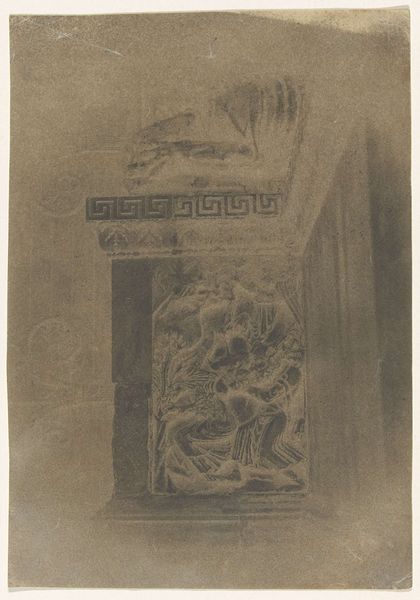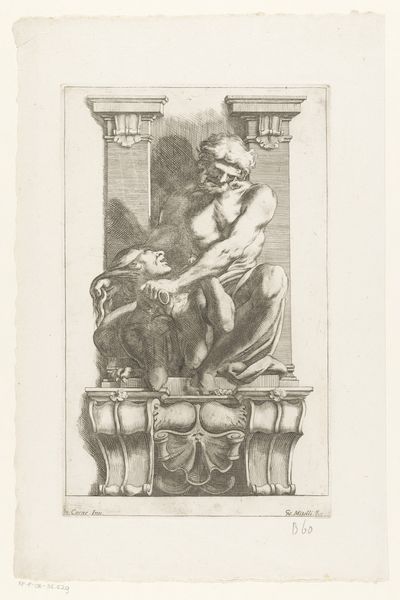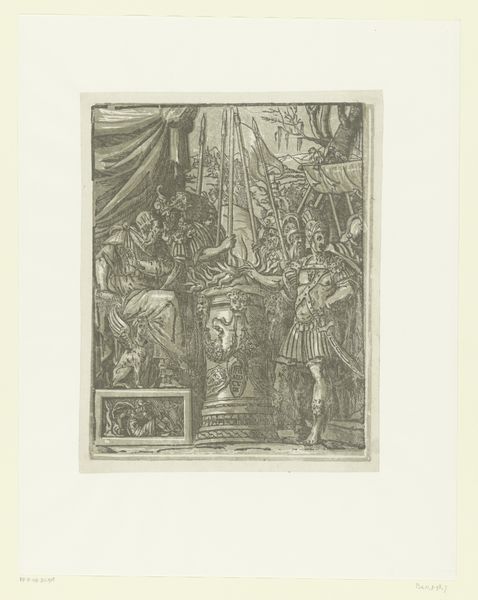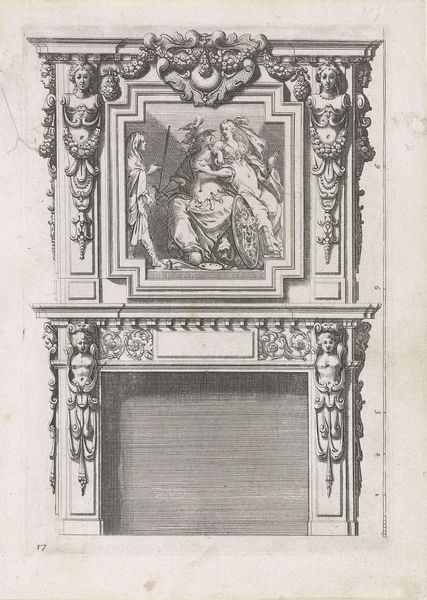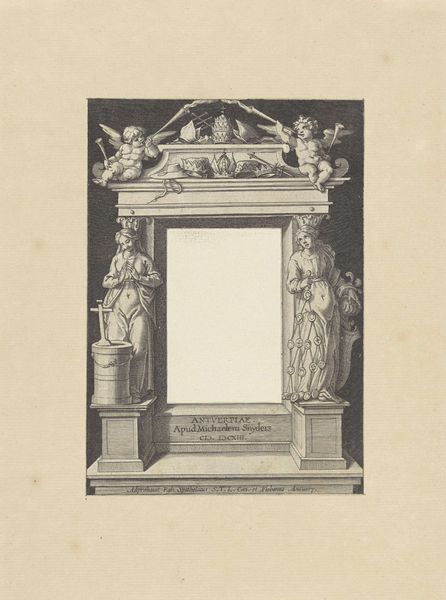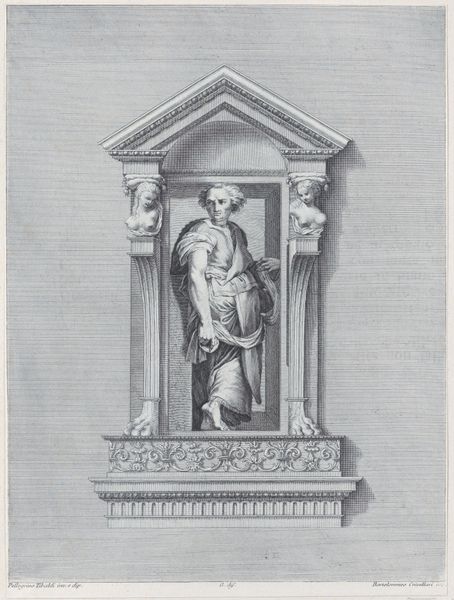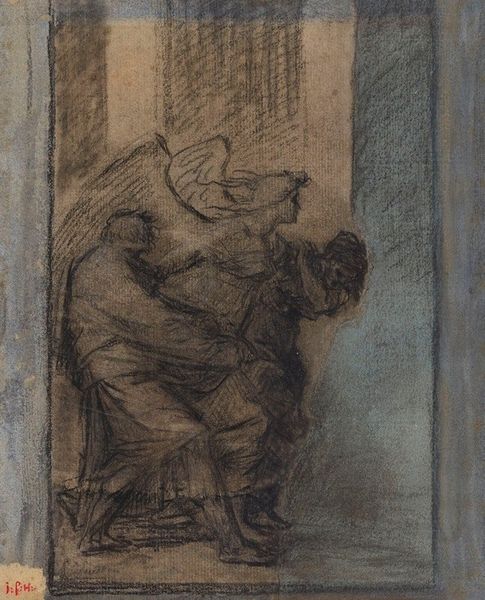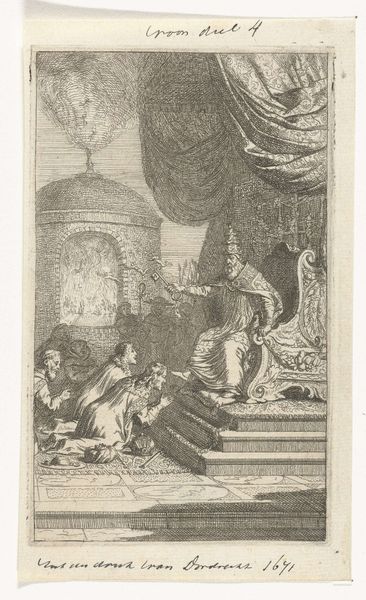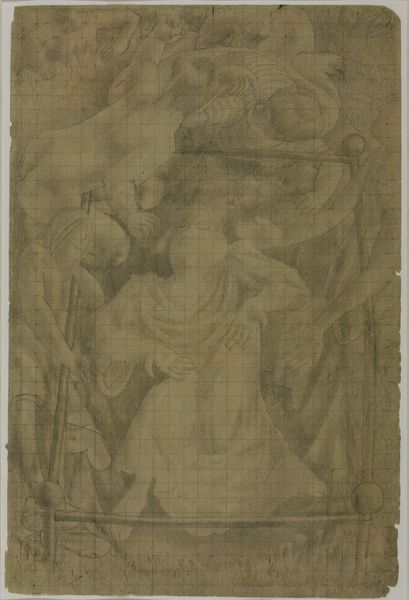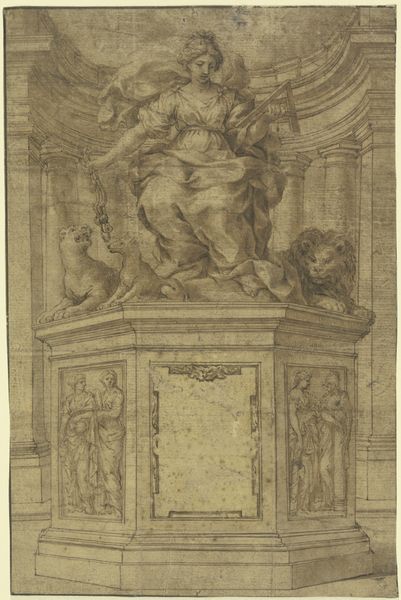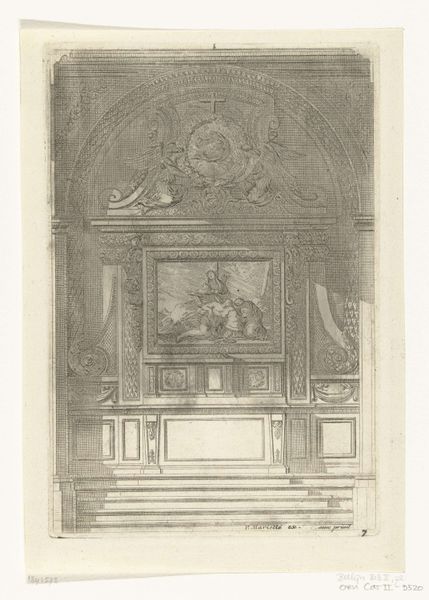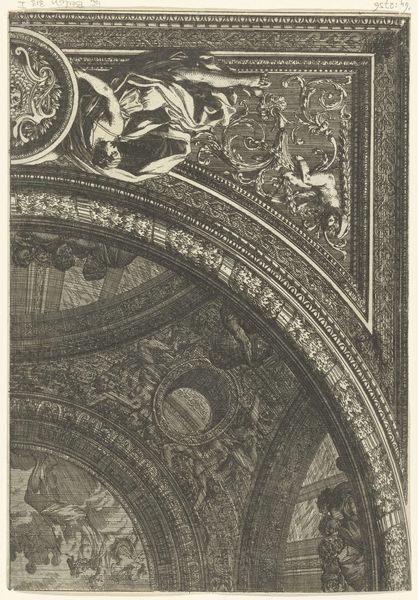
print, relief, photography, sculpture
# print
#
relief
#
old engraving style
#
landscape
#
photography
#
geometric
#
ancient-mediterranean
#
sculpture
#
realism
Dimensions: height 200 mm, width 137 mm
Copyright: Rijks Museum: Open Domain
Curator: Before us is a photograph taken by Charles Nègre between 1852 and 1860, entitled "Bas-relief aan de kerk van Saint-Gilles-du-Gard," currently held at the Rijksmuseum. Editor: It possesses this ghostly, almost ethereal quality. The soft focus lends a dreamlike quality to the stone carving. There is a starkness in its material makeup, the result of some laborious subtractive manufacturing. Curator: Indeed, Nègre, as a pioneering figure in photography, understood its documentary potential, especially for architectural subjects. He aimed to capture and preserve France's architectural heritage using photography to show it to the public. Editor: The visible tooling marks within the relief indicate an investment of countless hours and labor by artisans from long ago, and, while the photo itself may take seconds, it helps make accessible the production involved. Was this relief commissioned for the Church? Curator: Yes. The Saint-Gilles-du-Gard church was an important pilgrimage site. Reliefs like these served didactic functions for many of those who couldn’t read, conveying Biblical narratives and reinforcing social order within a sacred space. Editor: It is like frozen theatre, though much is lost in translation through photography, which, though impressive, alters the original work’s physical presence. Its removal from the architectural context diminishes how this relief was likely intended to impress with its placement and function. Curator: The act of photographing architecture, particularly religious architecture, opened it to wider audiences while it helped promote preservation efforts as well as the government-funded institutions. It certainly helped Nègre boost his career. Editor: So you are pointing at an instrumental approach. Looking at the social implication it served as a type of record in a way but also a reproduction meant for trade that circulated and extracted pieces of heritage, altering it from stone into print. Curator: Exactly, this photograph not only documented the existence of the relief but also transformed it into a portable commodity. Its impact is complex and intertwined with the social and political contexts of the time. Editor: An image imbued with a multitude of meanings and materials, from stone to the paper upon which we now perceive it. Curator: Quite so, Charles Nègre’s "Bas-relief aan de kerk van Saint-Gilles-du-Gard" remains a testament to photography's power and how images mold our interpretation.
Comments
No comments
Be the first to comment and join the conversation on the ultimate creative platform.
